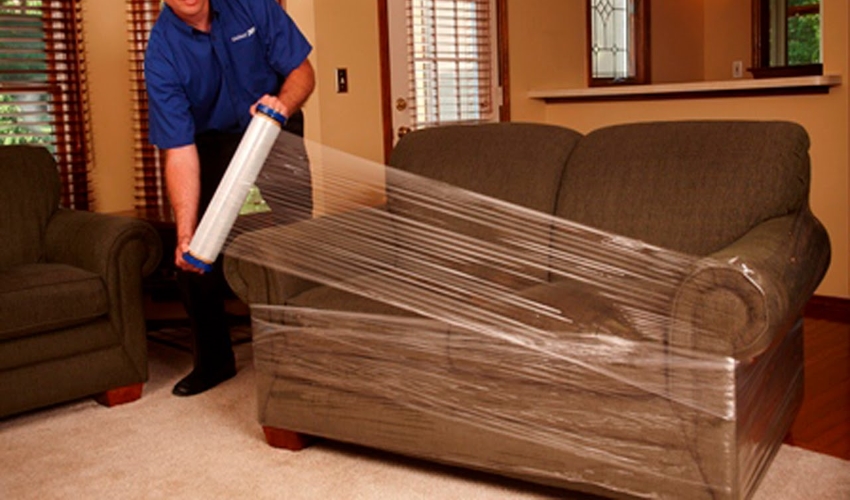
Moving furniture safely is essential for a damage-free relocation, and using moving furniture wrap can make a significant difference in protecting valuable pieces. Moving furniture wrap provides a secure layer that holds furniture components together, preventing drawers from sliding open, doors from swinging, and surfaces from scratching. During transport, furniture is vulnerable to dirt, moisture, and accidental impacts, but moving furniture wrap offers a barrier against these risks, keeping items clean and intact. Whether it’s used to wrap wooden tables, upholstered chairs, or even mattresses, moving furniture wrap is versatile, easy to use, and effective in minimizing potential damage. This protective solution is an essential tool for anyone aiming to keep their furniture safe throughout the moving process. Moving furniture wrap secures surfaces, prevents drawers and doors from moving, and simplifies packing with durable stretch film.
Why Choose Our Stretch Film Over Competitors?
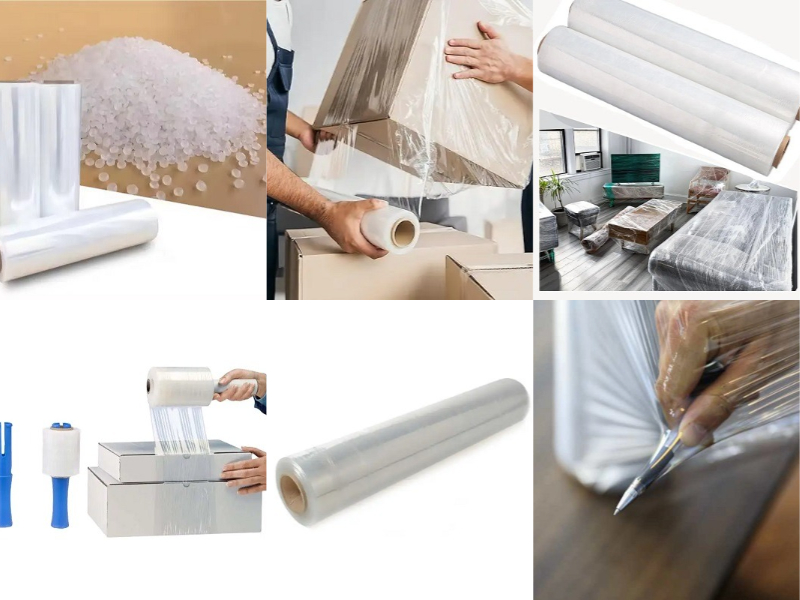
| Attributes | Details |
|---|---|
| Place of Origin | Fujian, China |
| Brand Name | PWP Stretch Film |
| Product Name | Moving Furniture Wrap |
| Material | Polyethylene |
| Features | Moisture-proof, Waterproof, Non-toxic, Shockproof |
| Hardness | Soft |
| Processing Type | Casting, Blow Molding |
| Transparency | Transparent, Opaque |
| Color | Customized |
| Thickness | Customized |
| Length | Customized |
| Width | Customized |
| Size | Customized |
| Weight | Customized |
| Surface | Smooth |
| OEM | Avaliable |
| Certificate | ISO, REACH, ROHS |
| Packaging | Standard Carton Packaging |
| Sales Unit | Single Item |
Moving furniture wrap is a specialized protective wrap used to secure and shield furniture during the moving process. Same as breathable stretch film, made primarily from flexible plastic materials like polyethylene. Furniture plastic wrap for moving is designed to cling tightly to furniture surfaces, forming a barrier against dust, dirt, and minor impacts. Its stretchable quality allows it to conform to furniture shapes, creating a secure, custom fit that holds drawers, doors, and movable parts in place.
Common types of moving furniture wrap include:
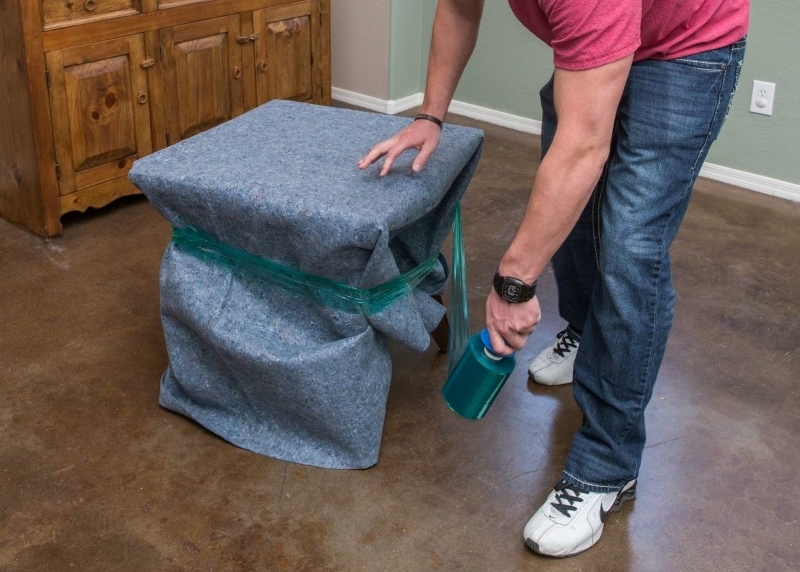
While standard plastic wrap is often used in kitchens for food storage, moving furniture wrap is specifically engineered to meet the demands of moving heavy and large items. Moving-grade wrap is usually thicker and more durable, designed to withstand the handling required during transport and storage.
| Feature | Standard Plastic Wrap | Moving-Grade Furniture Wrap |
|---|---|---|
| Primary Use | Food storage | Furniture protection during moving |
| Material Thickness | Thin, easily torn | Thicker, more durable |
| Cling Strength | Low, minimal clinging ability | High, sticks securely to furniture |
| Protection Level | Basic dust and moisture barrier | Protects from impacts, scratches, dirt |
| Suitability for Large Items | Not suitable for large items | Designed for bulky and heavy items |
Moving furniture wrap offers enhanced durability and clinging power compared to standard plastic wrap, making it an essential tool for safe and secure furniture transport.
When purchasing moving furniture wrap, it’s essential to choose a product that meets your needs effectively, ensuring your furniture is protected during transit. Stretch plastic wraps are a popular choice for their versatility and ease of use. To make an informed purchase, consider key factors such as material quality, size, type, and additional features. Below, we explore these considerations in detail to help you select the best wrap for your move.
The quality of the material determines the durability and effectiveness of the moving furniture wrap. A good wrap should offer strong protection without tearing easily.
Selecting the right size is crucial to ensuring you have enough material to cover all your furniture while minimizing waste.
There are various types of stretch wraps available, each suited to different applications. Choosing the right type ensures better protection for your furniture.
The ability of the moving furniture wrap to cling to itself ensures that it stays secure without leaving residue on your furniture.
For environmentally conscious buyers, choosing eco-friendly options can align with sustainability goals.
Balancing cost with quality ensures you get the most value from your moving furniture wrap purchase.
Making the right purchase of moving furniture wrap involves considering factors like material quality, size, type, and cost. Stretch plastic wraps provide a reliable solution for protecting your furniture during moves, and selecting the right product ensures a smoother and more efficient moving experience. By evaluating your specific needs and preferences, you can confidently choose the perfect wrap to safeguard your belongings.
Moving furniture wrap comes in several types, each with unique properties suited for different purposes during the moving process. Selecting the right type ensures maximum protection for your furniture, reduces the risk of damage, and keeps items secure.
Stretch wrap is a versatile and essential type of moving wrap for furniture. It is designed to stick to itself and is typically used for securing furniture blankets or padding. This wrap holds furniture components together, ensuring drawers and doors stay closed throughout the move.
Benefits of using stretch wrap include:
Bubble wrap is another popular choice within moving furniture wrap options. Its primary function is to protect fragile or delicate furniture surfaces from potential impacts and shocks. Bubble wrap provides cushioning, which helps absorb any bumps that may occur during transit. Other protective materials, such as foam sheets or padded blankets, are often used alongside bubble wrap to create additional layers of safety.
Key advantages of bubble wrap and similar materials include:
Moving furniture wrap is an essential tool when preparing furniture for relocation, offering multiple benefits that make the moving process smoother and safer.
One of the primary benefits of using wrapping furniture for moving is its ability to shield furniture from scratches, dirt, and moisture, ensuring pieces arrive at their destination in pristine condition. During transit, furniture is often exposed to dust, debris, and even unpredictable weather conditions that can cause damage.
Moving furniture wrap is ideal for stabilizing furniture components that may shift or open during transit, reducing the chance of damage.
Moving furniture wrap is straightforward to apply and remove, allowing movers to wrap items quickly and efficiently.
Incorporating furniture wrapping for moving into your moving plan ensures that furniture stays protected, stable, and clean during transit. This versatile solution offers a reliable layer of defense that makes moving safer and less stressful.
Using moving furniture wrap correctly can make a big difference in how well your items are protected. Here is a comprehensive guide on preparing furniture for wrapping, ensuring fragile parts are secure, and covering large or awkwardly shaped pieces for maximum safety during the move.
Saran wrap, commonly used in kitchens, can also be a quick solution for protecting furniture during a move. While it may not offer as much durability as specialized moving furniture wrap, saran wrap can be helpful for smaller items or to secure protective coverings in place.
Shrink wrap is a strong, durable option that is particularly useful for heavy or large furniture pieces. It is often heat-sealed for an even tighter fit, offering extra stability for big moves.
Wrapping a mattress in stretch wrap is essential for keeping it clean, dry, and protected during transport. This process requires attention to detail to ensure the mattress remains secure without compressing or damaging it.
By following these guidelines, moving furniture wrap can be applied effectively, offering the best protection for all types of furniture and mattresses during a move. This approach ensures your items are safely covered and ready for a smooth transition to their new home.
Using moving furniture wrap on wooden furniture is generally safe, but there are some considerations to keep in mind to ensure the finish remains protected. Moving furniture wrap is designed to cling to surfaces without adhesives, reducing the risk of residue or direct damage. However, certain types of wooden finishes may be more sensitive and require extra precautions to prevent potential issues.
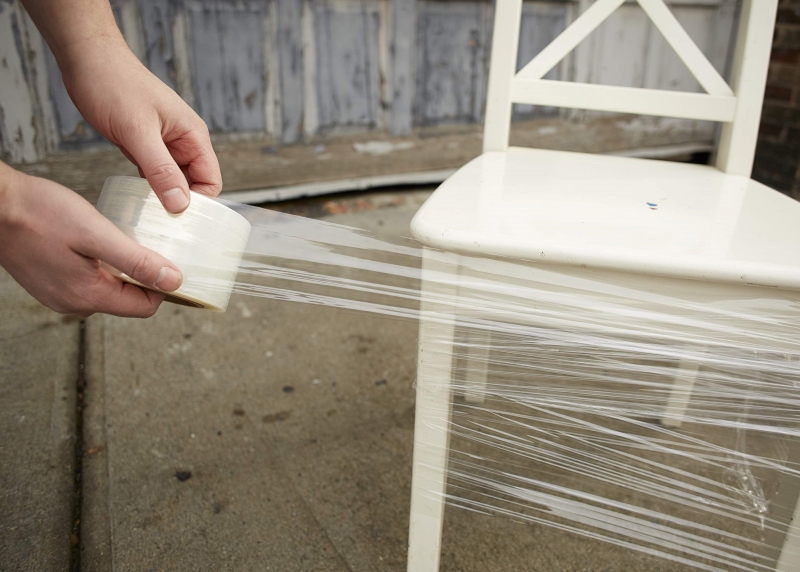
Wooden surfaces, especially those with delicate finishes, can sometimes be affected by plastic wraps if they are applied directly for long periods or under high temperatures. Here are some common concerns and tips for avoiding damage:
To protect wooden furniture while using moving furniture wrap, consider adding a layer of soft padding or fabric as a buffer. This adds an extra layer of security, especially for furniture with delicate or high-shine finishes.
Taking these precautions when applying moving furniture wrap ensures wooden furniture remains in excellent condition throughout the moving process, allowing for safe transport without compromising the integrity of delicate finishes.
For those seeking more sustainable options, there are several eco-friendly alternatives to traditional moving furniture wrap that can provide effective protection while minimizing environmental impact. These options reduce plastic waste and can often be reused, making them an excellent choice for eco-conscious movers.
Reusable wraps and covers are durable, flexible, and designed for multiple uses, making them ideal for moving without single-use plastics.
Opting for sustainable pallet wrapping materials can further reduce the environmental footprint of your move. These alternatives can often be recycled or are made from biodegradable materials.
If moving furniture wrap is necessary for certain items, there are ways to extend its life or dispose of it responsibly to lessen environmental impact.
Eco-friendly alternatives to moving furniture wrap offer durable, effective protection without the environmental impact of traditional plastic wrap. By choosing reusable materials and recycling responsibly, movers can ensure their belongings are safe while supporting a more sustainable approach to moving.
Selecting the right moving furniture wrap is essential for protecting your belongings during a move. Here’s a detailed guide for different scenarios:
Fragile items are prone to breakage, so choose bubble wrap as your primary material. Bubble wrap provides cushioning to absorb impact during transport. For extra security:
High-value items require maximum protection to avoid scratches, dents, or environmental damage. Use a combination of materials:
Fabric furniture needs protection from moisture, stains, and dirt. For this:
Heavy furniture needs durable protection to withstand loading and unloading stress. Here’s how:
Disassemble items whenever possible and wrap each component separately:
If items will be stored in a storage unit or garage, choose materials that protect against dirt and moisture:
By understanding the specific needs of your belongings and the conditions of your move, you can select the right moving furniture wrap to ensure their safety and security.
When selecting the appropriate moving furniture wrap size, consider the type, size, and quantity of items you need to protect.
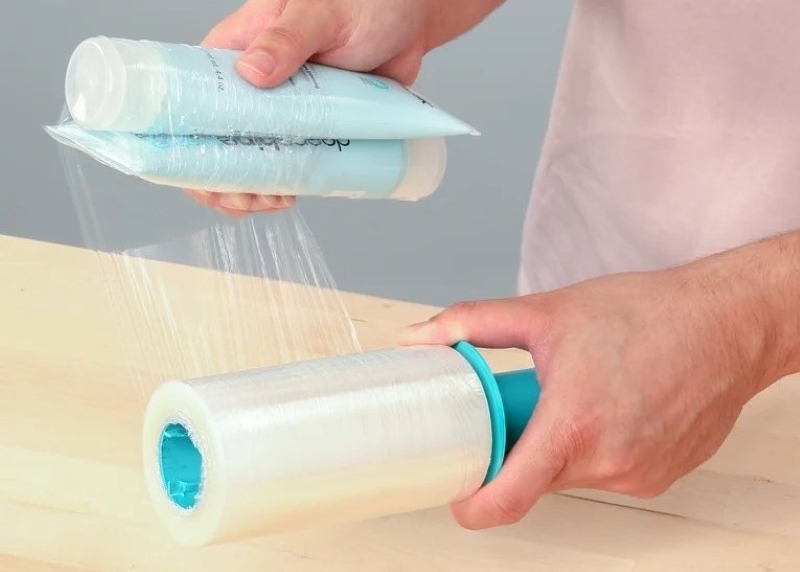
Here’s how to choose:
For smaller items like glassware, lamps, or picture frames, opt for bubble wrap rolls that are 12–24 inches wide. These sizes provide enough coverage without wasting material. Stretch wrap rolls with a width of 5–10 inches are ideal for bundling small components like cables or securing loose parts.
For items such as chairs, coffee tables, or shelves, use stretch wrap rolls that are 15–20 inches wide. This size allows for easy handling while providing adequate coverage. A standard roll length of 1,000 feet is usually sufficient for medium-sized furniture.
Large items like sofas, mattresses, or dressers require wider wrap rolls, typically 20–30 inches in width. These larger wraps cover more surface area, reducing the time and effort needed to wrap bigger items. Rolls with a length of 1,000–1,500 feet are ideal for handling multiple large pieces.
For bulky or heavy-duty items like industrial equipment or furniture on pallets, choose industrial-strength stretch wrap rolls with a width of 18–24 inches and a higher film thickness (e.g., 80–120 gauge). This ensures durability and secure bundling during transit.
For extended moves or storage, opt for extra-long rolls (2,000 feet or more) to ensure you don’t run out of material mid-wrap. Use a combination of wide rolls for large items and narrow rolls for smaller components.
By evaluating your items’ size and protection needs, you can select the appropriate moving furniture wrap size to ensure efficient packing and optimal protection.
When using moving furniture wrap, several tools can make the process easier, more efficient, and more secure. Here’s a detailed guide to the tools and how to use them:
Stretch wrap dispensers are handheld devices designed to hold the roll of stretch wrap and allow for smooth, controlled application.
Packing tape is essential for securing the ends of stretch wrap or for reinforcing bubble wrap layers. Tape dispensers make the process faster and more efficient.
A bubble wrap cutter or utility knife is used to trim bubble wrap or stretch wrap to the desired length without tearing or damaging the material.
Scissors are a versatile tool for cutting both bubble wrap and stretch wrap.
Corner protectors, typically made of foam or plastic, are used in combination with moving wrap to safeguard the corners of furniture.
Wearing gloves ensures a better grip on the wrap and protects your hands from friction or cuts during wrapping.
While not tools, moving blankets and foam padding are often used alongside moving furniture wrap for additional protection.
A measuring tape helps calculate the amount of moving wrap needed for specific items.
Using the right tools alongside moving furniture wrap ensures a smoother, safer, and more efficient packing process, protecting your furniture during transit.
Wrapping furniture when moving is highly recommended to prevent damage, dust, and moisture exposure during the transportation process. Moving involves a lot of handling, and even slight bumps or friction can lead to scratches, scuffs, and other surface damage. Moving furniture wrap provides a protective barrier that safeguards furniture surfaces, especially for delicate finishes like polished wood or upholstery, which can be susceptible to tearing or staining.
In addition to surface protection, wrapping furniture can also help keep doors and drawers closed on items like dressers or cabinets, preventing them from swinging open or sliding out during the move. This added stability reduces the risk of items being damaged or becoming safety hazards. Furniture wrap also helps in securing padding, such as moving blankets, which further protects against impacts and allows for safer stacking within the moving vehicle. Therefore, wrapping furniture not only keeps items in good condition but also enhances the overall efficiency and safety of the moving process, making it a valuable step in any relocation.
Movers wrap furniture in plastic to protect it from potential damage, such as scratches, dust, and moisture exposure, which are common risks during transportation. Plastic wrap provides a snug, secure layer that clings to the surface of furniture, effectively holding parts like doors and drawers in place and reducing the likelihood of accidents. This is especially important for items with multiple parts, such as cabinets and dressers, where loose components can cause damage to the furniture itself or other nearby items if they shift or open during transit.
Another reason movers use plastic wrap is to secure moving blankets or other protective padding around large items. This combination offers enhanced protection, absorbing shocks from bumps and vibrations on the road. Plastic wrap also has the advantage of being residue-free, meaning it won’t leave sticky marks or adhesive traces on the furniture, which is ideal for maintaining the condition of sensitive finishes. For many movers, plastic wrap is an essential tool for ensuring that furniture arrives at its destination in the same condition as it left, making it a standard practice in professional moving services.
Yes, wrapping furniture is essential for safe moving. It protects items from scratches, dents, and dirt during transit. Wrapping minimizes the risk of damage caused by friction, accidental bumps, or exposure to elements like moisture. Delicate materials such as leather or polished wood can be especially prone to damage, making proper wrapping a priority. Additionally, wrapping cushions, mattresses, or upholstered furniture prevents stains and keeps them clean. Secure wrapping also keeps furniture parts, like drawers or doors, in place during transport, reducing the risk of mishaps. Overall, wrapping adds an extra layer of protection and ensures your belongings arrive intact at your new location.
Professional movers commonly use stretch wrap (plastic wrap), furniture pads, moving blankets, and bubble wrap. Stretch wrap is ideal for securing loose furniture components, keeping drawers shut, and protecting items from dirt and moisture. Furniture pads or moving blankets offer cushioning and protect against scratches or impact damage. Bubble wrap is used for fragile or breakable parts, such as glass surfaces or decorations on furniture. Some movers also use packing tape to secure these protective materials. The combination of these wraps ensures each item receives adequate protection, regardless of its size or material, making them the go-to choices for moving professionals.
The best materials for wrapping furniture include stretch wrap, moving blankets, and bubble wrap. Stretch wrap is versatile and clings tightly to the furniture, offering protection from dirt and moisture while keeping parts secure. Moving blankets provide excellent cushioning and protect against scratches or dents during transport. For fragile components like glass doors or delicate edges, bubble wrap is the best option, offering padded protection against impact. Combining these materials ensures comprehensive protection for all furniture types. Additionally, packing tape is useful to keep wraps secure, but it should not come into direct contact with furniture to avoid residue or damage.
To wrap a couch, first remove any detachable parts such as cushions or legs. Clean the couch to prevent dirt from transferring during the move. Use stretch wrap to cover the couch, securing the entire surface tightly. For added protection, especially for leather or fabric couches, wrap it in moving blankets before applying the stretch wrap. Secure the blankets with packing tape or more stretch wrap. If your couch has exposed legs, consider using bubble wrap to protect them from scratches or breakage. Lastly, use cardboard to cover sharp edges or corners that could get damaged during transport.
Begin by emptying the dresser and securing its drawers with stretch wrap to prevent them from opening during the move. For added security, you can remove the drawers and wrap them individually. Protect the dresser’s surface by covering it with moving blankets, ensuring all corners are padded. Use packing tape or additional stretch wrap to keep the blankets in place. If the dresser has glass elements, cover them with bubble wrap before wrapping the entire piece with blankets. Make sure to protect any handles or decorative features to avoid scratches or impact damage.
The amount of bubble wrap required depends on the number and size of fragile items being moved. On average, a 150-foot roll of bubble wrap is sufficient for a small apartment. Larger households may need multiple rolls, particularly if there are large glass surfaces, mirrors, or delicate furniture parts. To estimate, allocate about 10–15 feet of bubble wrap for each fragile piece. For smaller items like lamps or decorations, you may need 3–5 feet per item. It’s better to overestimate and have extra bubble wrap than risk running out during packing.
To wrap a chair, start by removing any detachable parts such as cushions or legs. Use bubble wrap to protect delicate or protruding components like chair arms or legs. For upholstered chairs, first cover the surface with stretch wrap to shield the fabric from dirt and moisture. Then, wrap the entire chair in a moving blanket to add cushioning and protect against scratches or dents. Secure the blanket with packing tape or additional stretch wrap. For chairs with intricate designs, ensure all exposed areas are covered, especially edges and corners prone to damage.
While saran wrap can be used for small, lightweight items, it is not ideal for moving furniture. Professional-grade stretch wrap is thicker, stronger, and designed to protect furniture during transit. Saran wrap may tear easily and lacks the durability needed for larger or heavier pieces. However, it can be a quick solution for securing small components like cables or tools to furniture. For full furniture protection, invest in proper stretch wrap or use a combination of bubble wrap and moving blankets to ensure safety and durability.
To protect furniture legs, wrap them individually with bubble wrap, securing the material with packing tape. For added cushioning, consider using foam padding or corner protectors around the legs. If the legs are detachable, remove them and wrap them separately. For chairs or tables with non-removable legs, wrap the entire base in stretch wrap, covering the legs and joints. When loading furniture onto a truck, avoid placing heavy items directly on top of the legs to prevent damage. Adding cardboard reinforcements can provide extra protection during the move.
Begin by removing all books and detachable shelves from the bookcase. Wrap each shelf individually with bubble wrap or moving blankets to protect their surfaces. Cover the bookcase itself with moving blankets, ensuring the corners and edges are well-padded. Use packing tape or stretch wrap to secure the blankets in place. For bookcases with glass doors or panels, wrap the glass components with bubble wrap before applying moving blankets. If the bookcase has sharp edges, consider reinforcing them with cardboard for added protection during transit.

My name is James Thompson, and I’m the editor of this website dedicated to Stretch Film, Pallet Wrap, and Stretch Wrap products.
My passion for packaging began when I noticed the challenges companies face in securing their products efficiently for transportation and storage. This inspired me to delve deep into the world of stretch films and pallet wraps, exploring the latest technologies and best practices.
I aim to provide valuable insights, practical tips, and up-to-date industry trends to assist you in making informed decisions. Whether you’re a small business owner or part of a large corporation, my goal is to support you in optimizing your operations and ensuring your products reach their destination safely.
Thank you for visiting, and I look forward to accompanying you on your journey toward better packaging solutions.
Comments are closed